More Stories
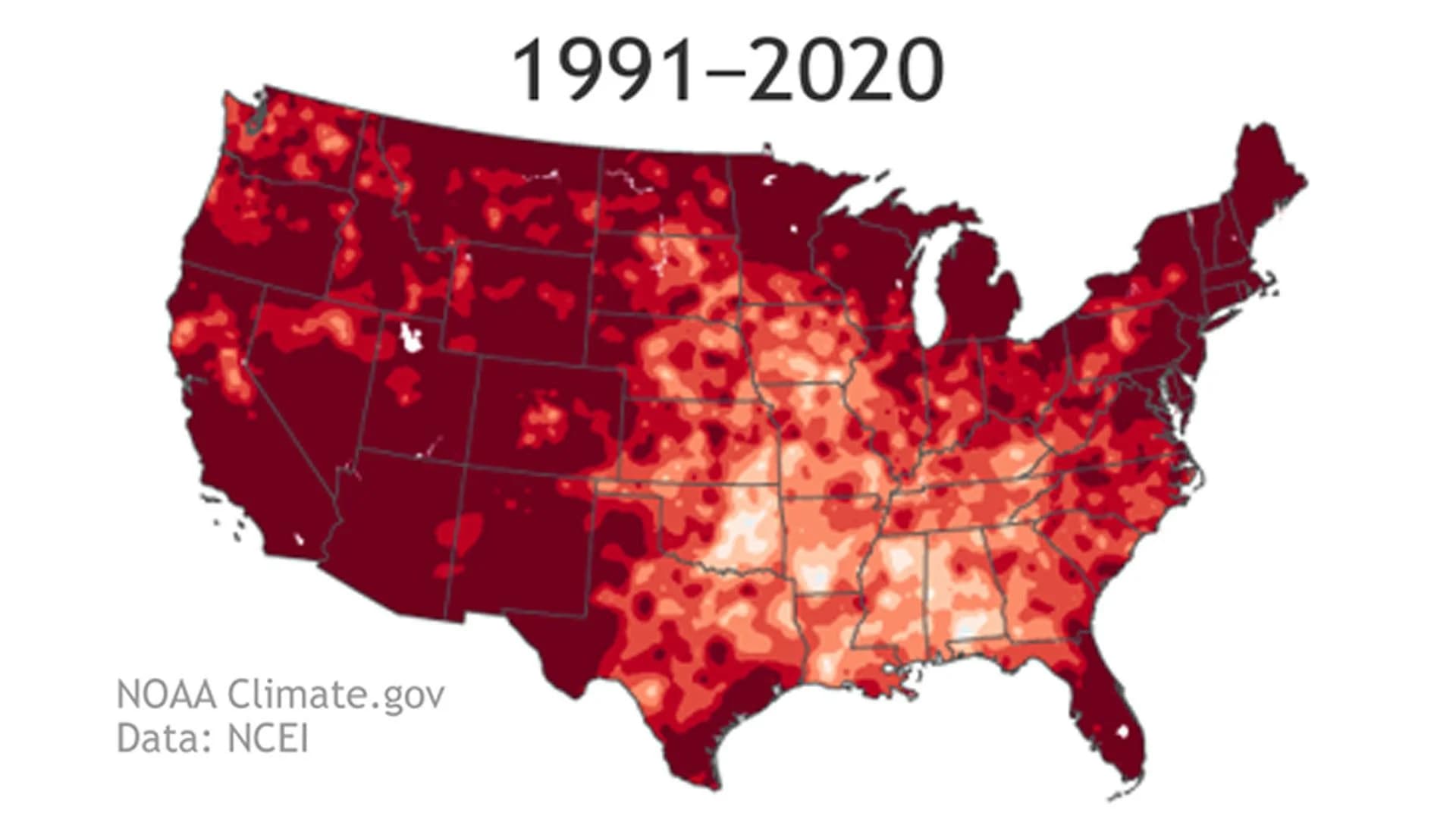
Every 10 years, the National Oceanic and Atmospheric Administration releases updated temperature and rainfall averages.
These 'new normals' - which use data from thousands of weather stations around the country - are calculated for the past three decades. Using these 30-year periods helps to ensure that the numbers are not skewed by any short-term swings.
This latest data is the tenth update of climate normals, which began back with the 1901-1930 period. By quickly looking at the chart below, it doesn't take a climate scientist to see the trend: a warmer and wetter environment.
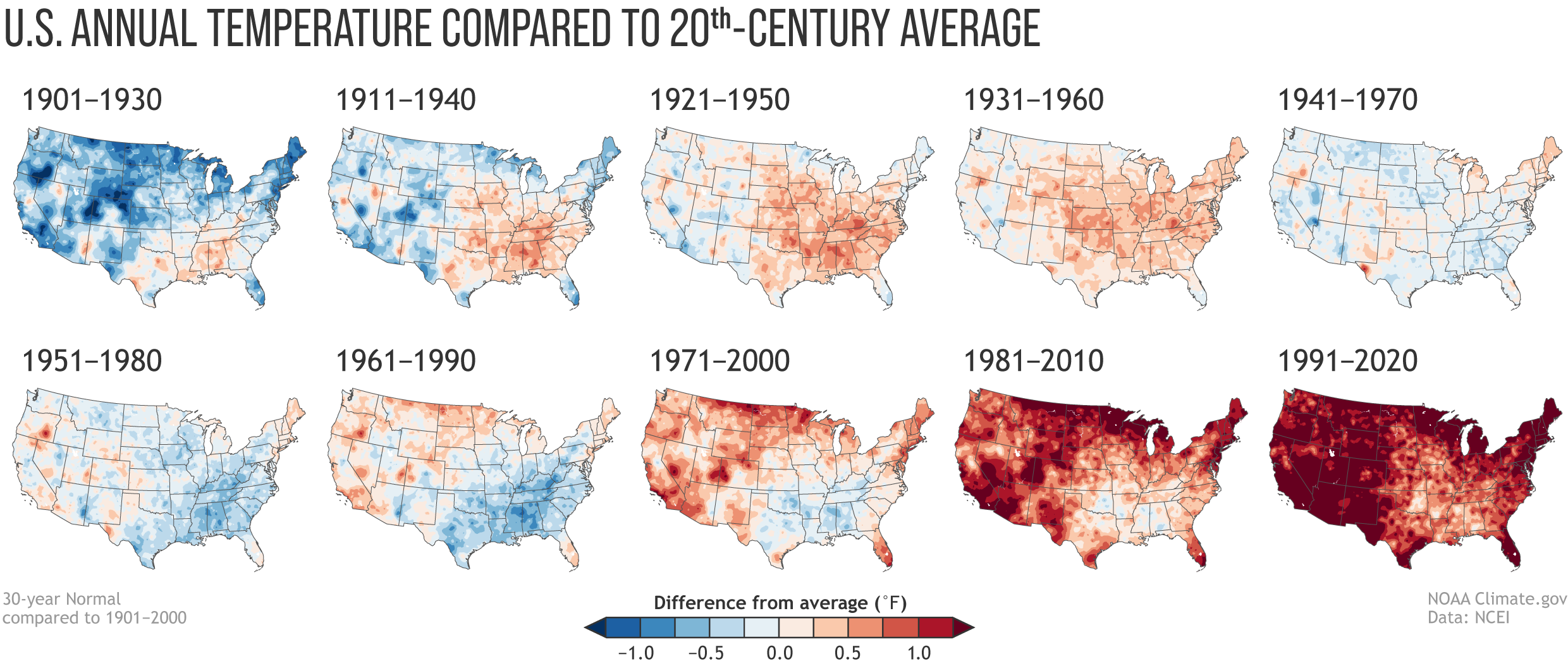 Annual U.S. temperature compared to the 20th-century average for each U.S. Climate Normals period from 1901-1930 (upper left) to 1991-2020 (lower right. (NOAA Climate.gov)
Annual U.S. temperature compared to the 20th-century average for each U.S. Climate Normals period from 1901-1930 (upper left) to 1991-2020 (lower right. (NOAA Climate.gov)
Notice how dark red the newest update is. The country as a whole has warmed 1.7 degrees Fahrenheit since the early 20th century, with a large percentage of the lower 48 warming 2-4 degrees Fahrenheit - including the tri-state area.
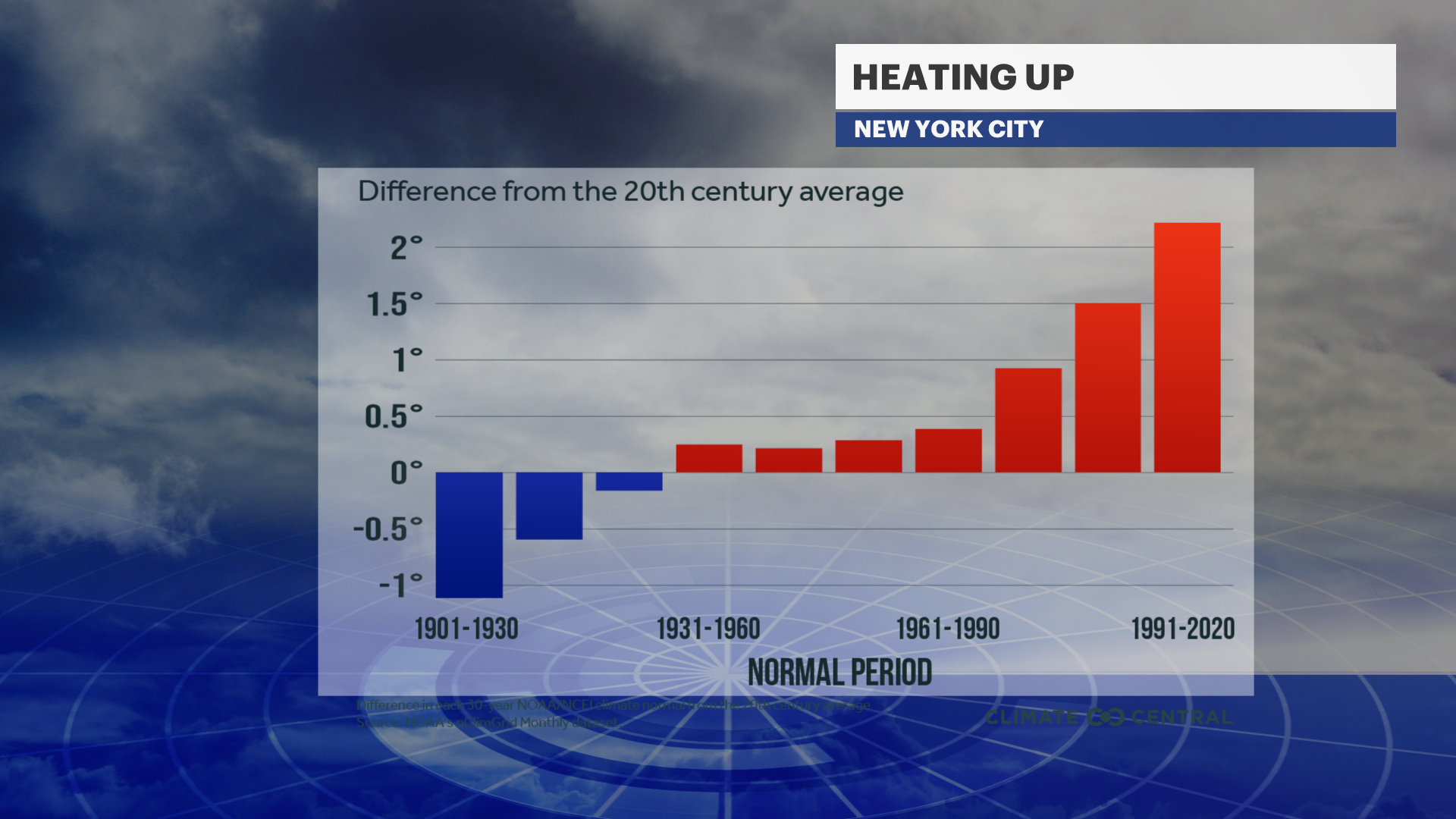
To start, let's look at Central Park as a centralized point. Every single month has warmed since the last climate update. This ranges from as little as a tenth of a degree to as much as 1.2 degrees.
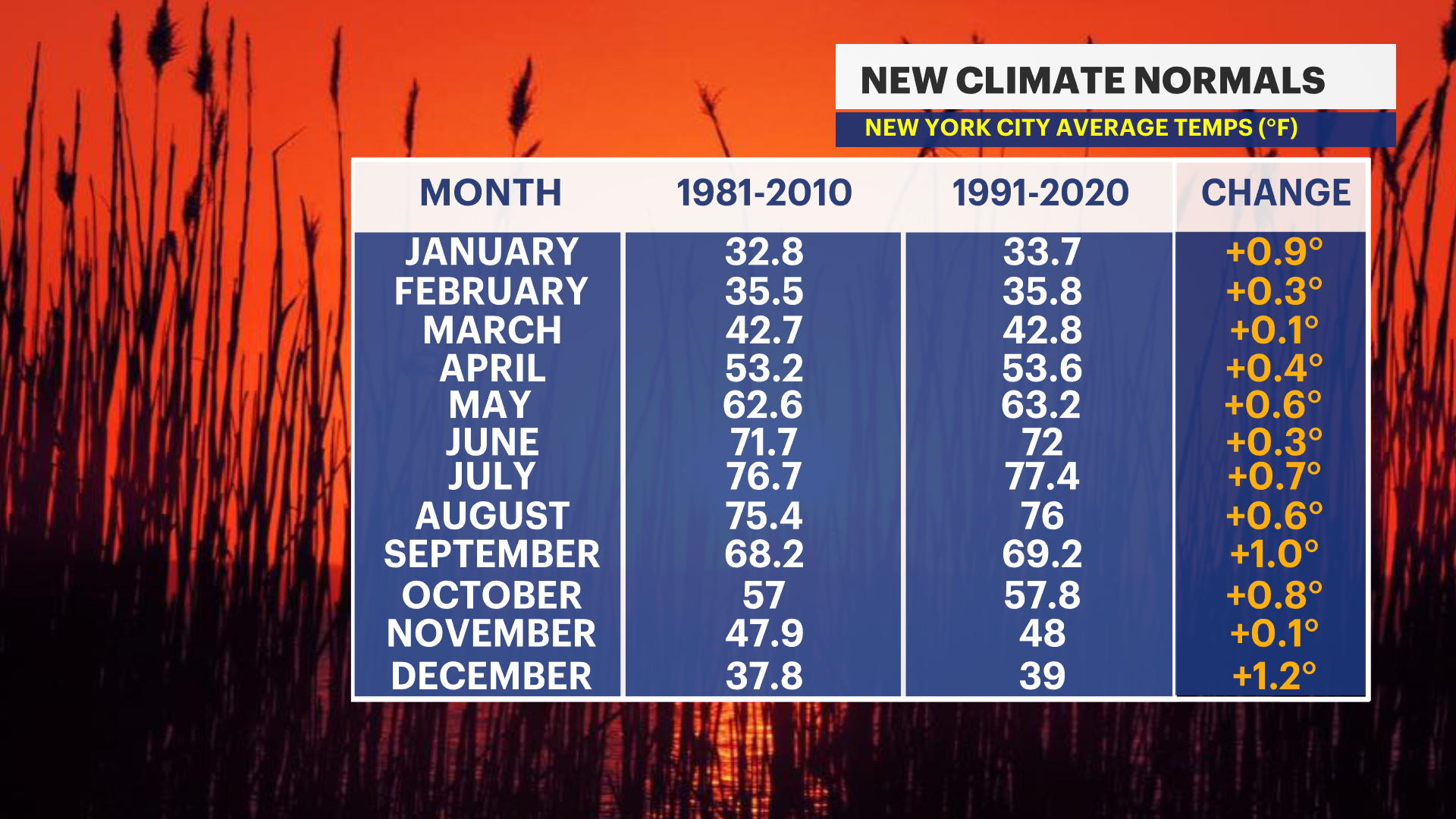
The rest of the tri-state weather stations are not far off. Every single reporting station has recorded a yearly increase of at least half a degree Fahrenheit. While this may not seem like a big jump, it's staggering to see that over just a decade.
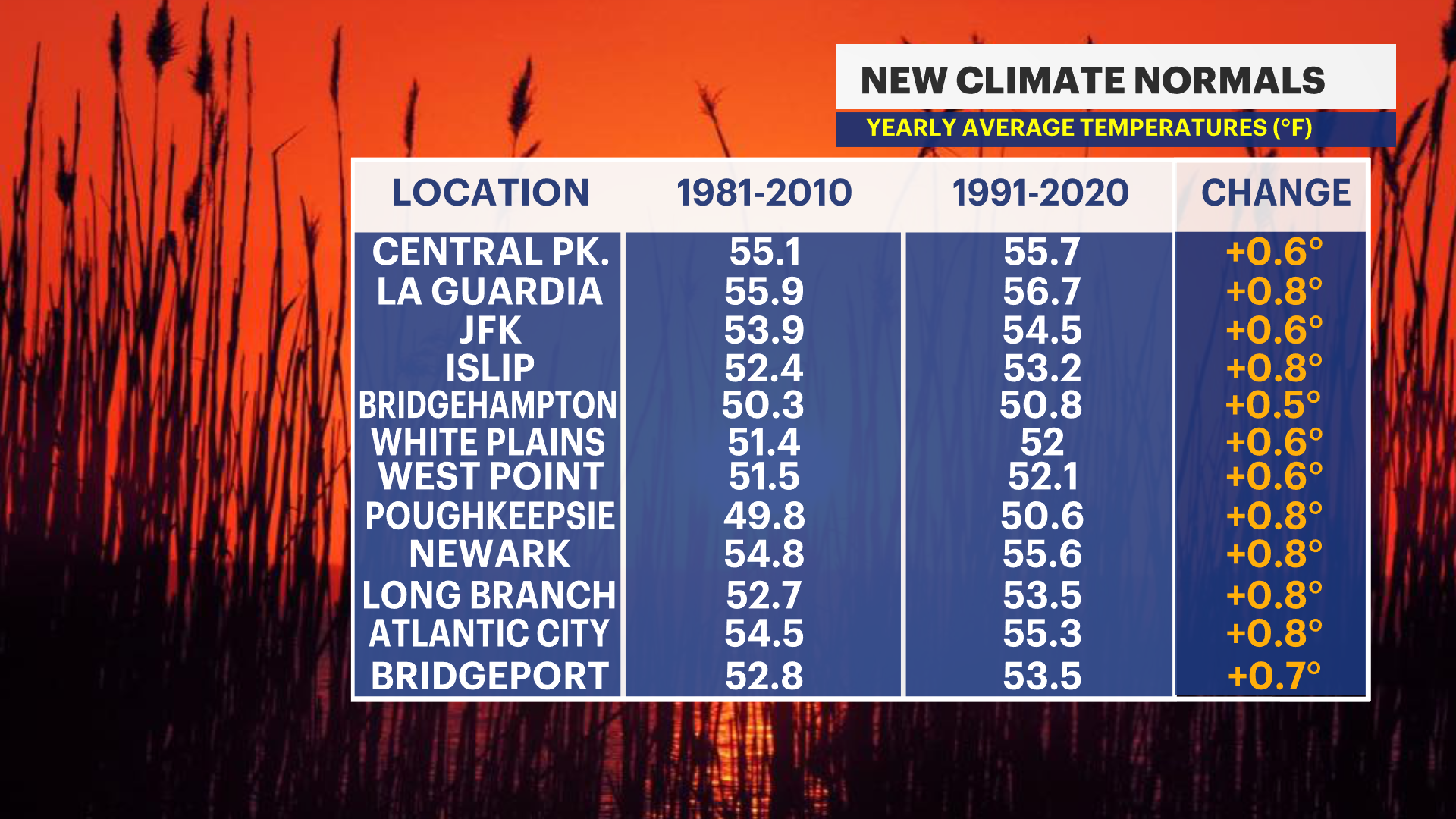
While not as pronounced as the temperature trends maps, the precipitation maps below show increasing moisture in the Midwest and Northeast, and drier conditions in the Southwest.
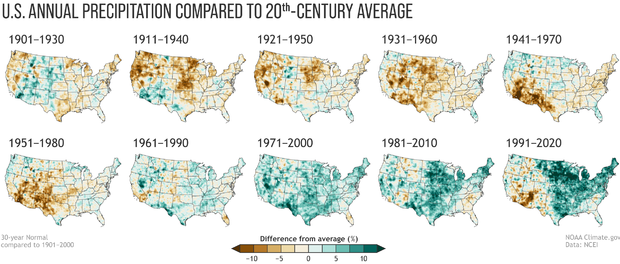
There is a connection between temperature and rain/snowfall, however: warmer air is able to hold more moisture. This could explain the overall rise in precipitation across the country. Warmer air also causes more evaporation, which leads to more precipitation.
New normals are important to meteorologists to help convey to the public if weather on any given day is unusual or to be expected. The update is also essential for a variety of other areas, including agriculture, water and energy conservation, travel and tourism. But while the majority of climatologists agree that it is crucial to keep weather and climate data updated, there are a few whom aren't fans of it. Some say that this system of reporting new normals is normalizing our changing climate, and making stark changes seem less significant. This can lead people to think that warnings about our environment are a charade, which is counterproductive.
The coming decades will undoubtedly reveal even more information about the state of affairs of our climate.
More from News 12
1:32

Rye residents raise concerns over fire department staffing numbers
1:35

Two people found dead inside Town of Poughkeepsie home
1:55

Gov. Hochul says she has reached a deal to legalize medically assisted suicide
1:54

Heavy Rain & Gusty Winds Move In to Finish the Week
1:42

Funeral held for retired FDNY, Rockland man, who died from 9/11 related illness
1:22
